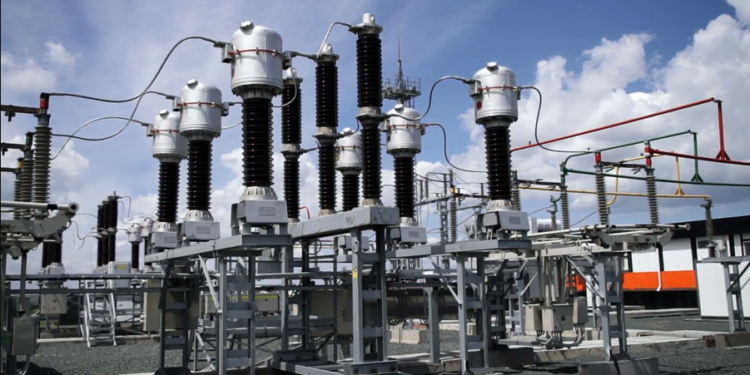Electricity Tariffs, Rising Costs, and Household Reality: A Playbook Unchanged

Nigeria’s rising electricity tariffs are tearing giant holes in consumers’ pockets and putting pressure on manufacturers’ operating costs, leading to a fall in product demand as prices spiral upwards. Not only have the increased tariffs pushed prices higher, but they have also led to a fall in product demand, which may lead to job losses and depressed household incomes.
A survey of the impact of higher tariffs on businesses and individuals shows that:
- Manufacturers in Band A industrial clusters have seen electricity tariffs rise roughly three times their previous levels
- Manufacturers have passed on (or attempted to pass on) the increased tariff to consumers with varying degrees of success
- Manufacturers have seen operating costs as a proportion of their net sales rise sharply, resulting in a squeeze in companies’ earnings before interest, tax, depreciation, and amortisation (EBITDA).
- Consumers in the Band A electricity category have seen their power bills soar, leading to a reassessment of energy choices, resulting in multiple power supply options, including solar power and inverters.
- Consumers have become more sensitive to the number of hours of power supplied by the authorities as they expect minimal outages
- Consumers have had to reallocate their financial resources, resulting in a shift in household budget priorities.
In this report, the analysts considered the following:
- Electricity Supply and Consumption Dynamics in Q1 2024
- Electricity Tariff Hike: Unravelling of Band A Consumers
- Electricity Subsidy: The Households Dilemma
- Closing Thoughts: Revisiting the Electricity Sector Dashboard
The Electricity Act of 2023 has been widely labelled as a game changer with the potential to enhance investment and mitigate longstanding challenges in Nigeria’s power sector. While analysts may largely agree that the Act’s provisions are potent, historical insights from Nigeria’s policy implementation cycles reveal that many promising policies, often called game changers, have faltered during implementation.
Electricity Supply and Consumption Dynamics in Q1 2024
In its Q1 2024 electricity report, the National Bureau of Statistics (NBS) revealed a growing demand for electricity in the country. However, despite policies like the Metre Allocation Program (MAP), Nigeria still has an over 40% metering gap. The NBS report discloses that electricity supply declined in Q1 2024 amidst growing consumer demand for electricity. Concurrently, revenue performance mirrored the movement of the declining electricity supply in Q1 2024 (see chart 1 below).
Cha
Electricity Tariff Hike: Unravelling of Band A Consumers
On November 8, 2023, Nigeria’s Minister of Power, Adebayo Adelabu, disclosed President Tinubu’s decision to halt the planned implementation of an electricity tariff hike while stressing the President’s position on the need to avoid additional burdens on Nigerians.
However, on April 2, 2024, the Nigerian Electricity Regulatory Commission (NERC) revealed a tariff hike for Band A electricity consumers while other Bands remained unchanged (see illustration 1 below).
Illustration 1:
Electricity Subsidy: The Households Dilemma
Should the electricity subsidy be removed or maintained? This question has divided analysts and policymakers. The subsidy removal school of thought largely advocates for the benefits of removing subsidies while also questioning the sustainability of the current subsidy regime. Notably, in its February 2024 Financing Assessment Report on Nigeria, the IMF called for a halt on allocating resources to electricity subsidy payments (see chart 3 below).
Chart 3:
Proponents of subsidy removal argue that subsidies, might crowd out more productive government expenditures, resulting in rent-seeking, and misallocation of resources to unintended beneficiaries. Additionally, they argue that subsidies have disproportionately benefited higher-income electricity consumers, such as those in Band A, over lower-income consumers (see chart 3 below).
Chart 3:
On the other hand, subsidy removal antagonists note that households have endured too many utility price increases to endure more. They argue that previous product or service price increases from petrol subsidy removal and food insecurity have led to food inflation of 40.87% in June 2024 from 25.25% in 2023, declining purchasing power in the face of stagnant income, and a falling exchange rate, amongst other internal and external shocks, persist. Economist and CEO of The Centre for Promotion of Private Enterprise (CPPE), Dr Muda Yusuf, states that “…electricity consumers in band A are yet to recover from the shocks of the recent increase.”
Proshare analysts’ survey of the current monthly electricity-to-income proportion of selected households shows that band A consumers’ allocation to electricity spending is the highest relative to other bands and takes at least 12% of disposable income (see illustration 2 below).
Illustration 2:
Household prices of goods and services have risen due to operational costs, which largely rose strongly in Q1 2024 relative to a similar period in 2023. Businesses’ strategic operation models are being adjusted to adapt to the challenging business landscape.
While some firms moved to generate their power, such as Flour Mills of Nigeria’s Golden Penny Power, many others have integrated alternative power sources to complement the current power sources According to Ayo Bankole, Co-Founder of Caladium Lagos SME Bootcamp, “What is happening to MSMEs now is that many of them, due to rising electricity costs, are saving to buy the retail solar products.”
Closing Thoughts: Revisiting the Electricity Sector Dashboard
Proshare analysts believe that subsidy removal comes with positive implications for the management of the liquidity crisis the power sector faces and the restoration of a market-reflective tariff system; however, a balance must be maintained in the trade-off between the pains from the removal of subsidy and the benefits to be derived. Nigerians should not have to go through another round of subsidy removal without an equal and complementary buffer for pains that may emanate following events of the petrol subsidy removal.
Analysts argue that Nigeria’s electricity sector’s challenge goes beyond subsidy removal. They note that It is crucial to exercise prudence and demand clear, actionable, and time-bound responses to key questions before making any decisions, as solely removing subsidies will likely have a limited impact on addressing the deeper challenges within the power sector. Can a subsidy removal be guaranteed to result in a more efficient power sector performance? This question is underscored by the fact that despite a tariff increase for Band A consumers in April 2024, the national grid experienced approximately four collapses between January 2024 and June 2024.
Does the policy ultimately solve the multidimensional challenges in Nigeria’s power sector, or is subsidy just a scapegoat to cover the liquidity crisis originating from what some have labelled as the mismanagement of funds allocated to power sector development over the years? Additionally, what buffers have been put in place to cushion the pains that will result in the removal of electricity subsidies?




